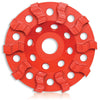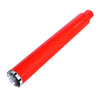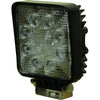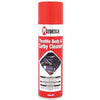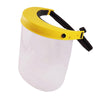
Laying and working with concrete machinery is a very time sensitive matter. The last thing you want after laying down the base foundation is to find out you don’t have the right tools for the job, pushing the whole project back.
Ensuring that you have a basic concrete tools supply can mean the difference between a successful and high-quality construction site and one that either doesn’t fall into code or blows its budget. These tools are usually quite basic and won’t end up becoming a large investment, but it’s still important that you own these tools as a contractor, rather than forking out unnecessarily on equipment hire.
Concrete Screeds
Concrete Screeds are important in creating a smooth and flat surface once your concrete slab has been poured. These tools are usually long and straight pieces of square tubing available in a range of sizes depending entirely on the size of the slab at hand.
It’s important to make sure that when choosing a hand-held concrete screed, depending on the job, this can be determined by the width of your concrete form or boxing. This will allow the screed to glide along the top edges of the form while smoothing out your concrete, giving you the best finish possible.
Concrete Vibrators
A concrete vibrator is used to consolidate and settle your concrete slab so that it dries evenly and smoothly leaving a beautiful finish that will last. There are four main model types that work in different applications these include.
- Internal vibrator which is also known as a needle or a spud vibrator. This model will use a vibrating probe to settle your wet concrete.
- Form vibrators or outside vibrators will attach to the outside of your concrete slab form work. These generally work more effectively for areas when inner vibrators can’t reach, like in thin and congested sections, arches and tunnel lining.
- Screed vibrators which attach to a moving screed and vibrate the concrete during the screeding process, working to smooth and compact your slab.
- Table vibrators are a metal table that are used for vibrating concrete when it’s poured inside a mould.
Portable Concrete Mixer
A portable concrete mixer can save you a large handful of time when you need to mix a small amount of concrete for gaps or faults. They can also work effectively for small concrete slabs, It also makes for a more thorough and smoother concrete pour.
Concrete Saw
While you’ll need a range of saws on a construction site you'll want to make sure you have a concrete cutting saw on hand as well. These saws will be used to cut control joints while the concrete is setting once it’s been poured.
Grooving Trowels
Also known as Groovers, these tools are used to create joints on concrete surfaces for walkways, driveways, residential slabs, and pavements. Groovers can be characterised by a horizontal plate with a vertical fin attachment. The horizontal plate has rounded edges for shaping the grooves in the concrete. These tools are generally used in place of a concrete cutter on the shallower pours.
Laser Level
A laser level is one of the most important tools you’ll need when working with concrete, providing an extremely accurate reading even over long and wide distances. Laser levels will determine the elevation and level of your concrete surface. They also become useful when you need to check the correct height of embedded items like bolts and concrete anchors.
High Quality Concrete Basics
If you need any help figuring out the best tool for your concrete project head to our website to find out more about our range of industrial and construction concrete tools. You can contact our team of experts on 09 283 9658.


































